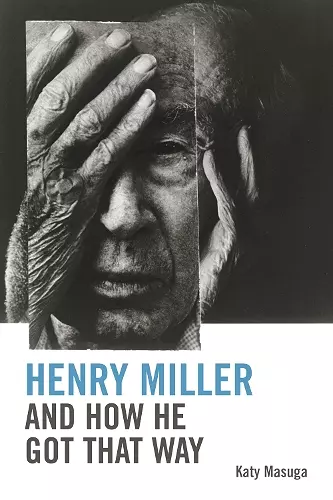Henry Miller and How He Got That Way
Format:Hardback
Publisher:Edinburgh University Press
Published:23rd Feb '11
Currently unavailable, and unfortunately no date known when it will be back

Identifying six significant writers - Whitman, Dostoevsky, Rimbaud, Lewis Carroll, Proust and D. H. Lawrence - Katy Masuga explores their influence on Miller's work as well as Miller's retroactive impact on their writing. She explores four forms of intertextuality in relation to each 'ancestral' author: direct allusions; unconscious style; reverse influence; and participation of the ancestral author as part of the story within the text. The study is informed by the theories of Bakhtin, Barthes and Kristeva on polyvocity and of Blanchot, Wittgenstein and Deleuze on language games and the indefatigability of writing. By presenting Miller in intertextual context, he emerges as a noteworthy modernist writer whose contributions to literature include the struggle to find a distinctive voice alongside a distinguished lineage of literary figures. Key Features * Major contribution to rehabilitating an important and often overlooked twentieth-century writer * Places Miller's work in thought-provoking intertextual relationships among a diverse range of writers * Provides an incisive critical approach to Miller's writing
Books may be, as Miller said, "as much a part of life as trees, stars or dung," but he also said 90% of them "could be thrown on the junk heap." As for the 10% which contributed to the often overlooked intelligence of his seemingly pornographic, idiosyncratic prose, Katy Masuga's much-needed study discretely shows why, and how, with suggestive attention to the writer writing about writing itself. -- Herbert Blau, Byron W. and Alice L. Lockwood Professor of the Humanities University of Washington Henry Miller, although he read widely, selectively and in some ways eccentrically, was a totally instinctive writer, whose novels as well as his other writings were based on observation and personal experience rather than ideas or influences. Katy Masuga's study of Miller is a brave endeavour to bind him to his reading, and she finds surprising and original sides to his work that have not been noticed before, giving him a sophistication buried underneath the surface of his work, that might have surprised even the author himself. Anybody looking for the depths in Henry Miller's novels that he sought in his reading will find it here. -- John Calder, publisher and bookseller Books may be, as Miller said, "as much a part of life as trees, stars or dung," but he also said 90% of them "could be thrown on the junk heap." As for the 10% which contributed to the often overlooked intelligence of his seemingly pornographic, idiosyncratic prose, Katy Masuga's much-needed study discretely shows why, and how, with suggestive attention to the writer writing about writing itself. Henry Miller, although he read widely, selectively and in some ways eccentrically, was a totally instinctive writer, whose novels as well as his other writings were based on observation and personal experience rather than ideas or influences. Katy Masuga's study of Miller is a brave endeavour to bind him to his reading, and she finds surprising and original sides to his work that have not been noticed before, giving him a sophistication buried underneath the surface of his work, that might have surprised even the author himself. Anybody looking for the depths in Henry Miller's novels that he sought in his reading will find it here.
ISBN: 9780748641185
Dimensions: unknown
Weight: unknown
208 pages